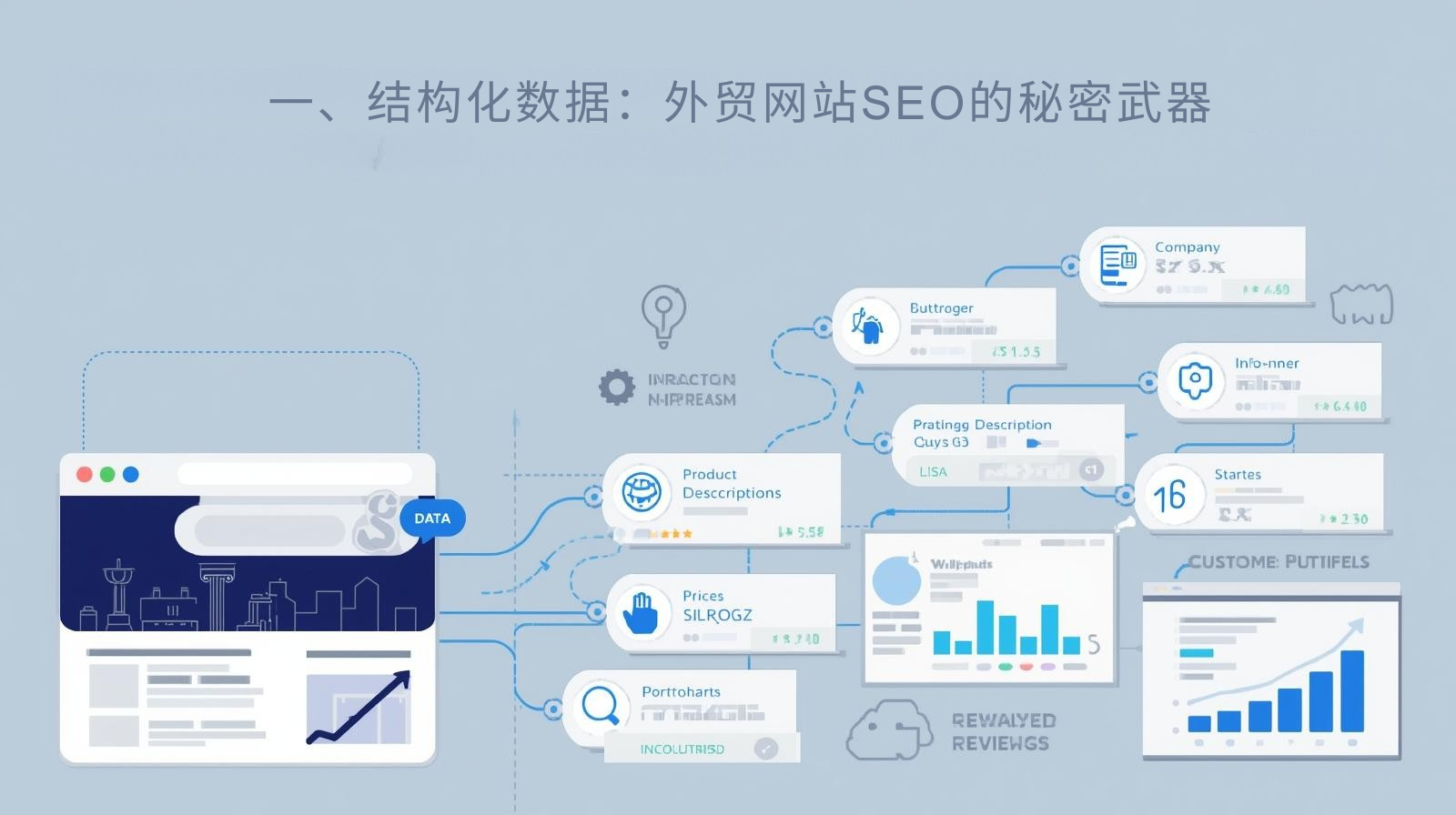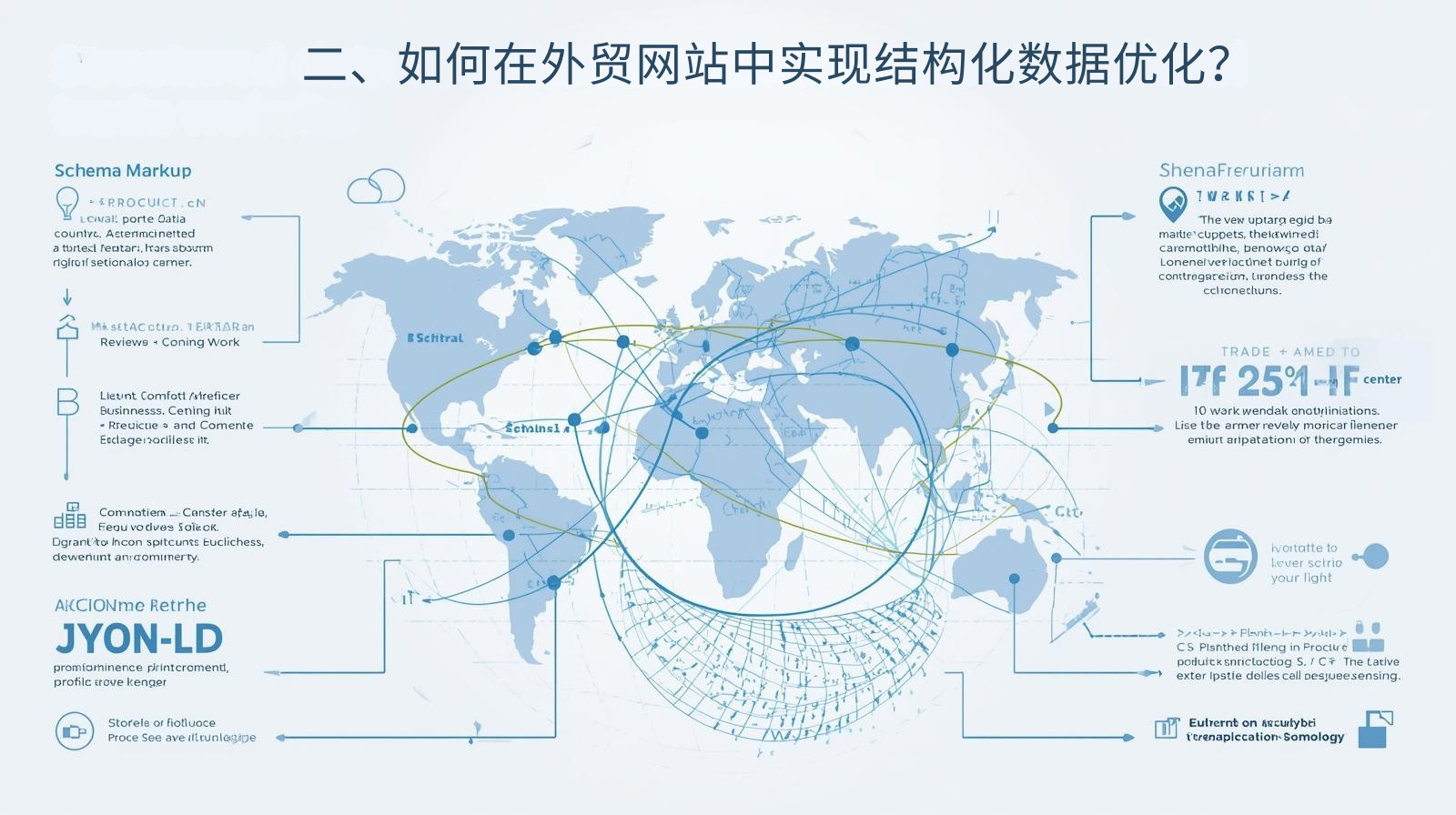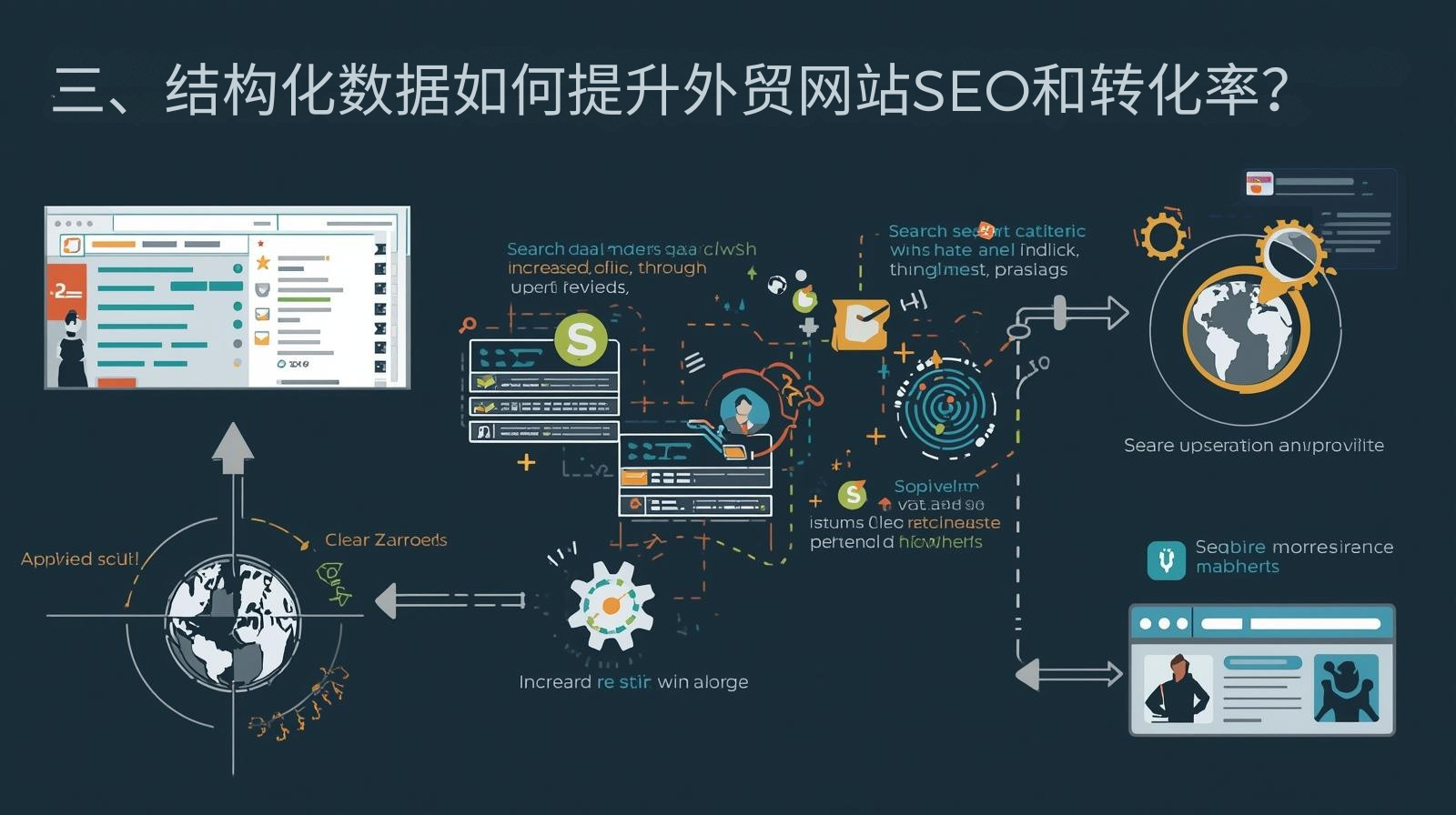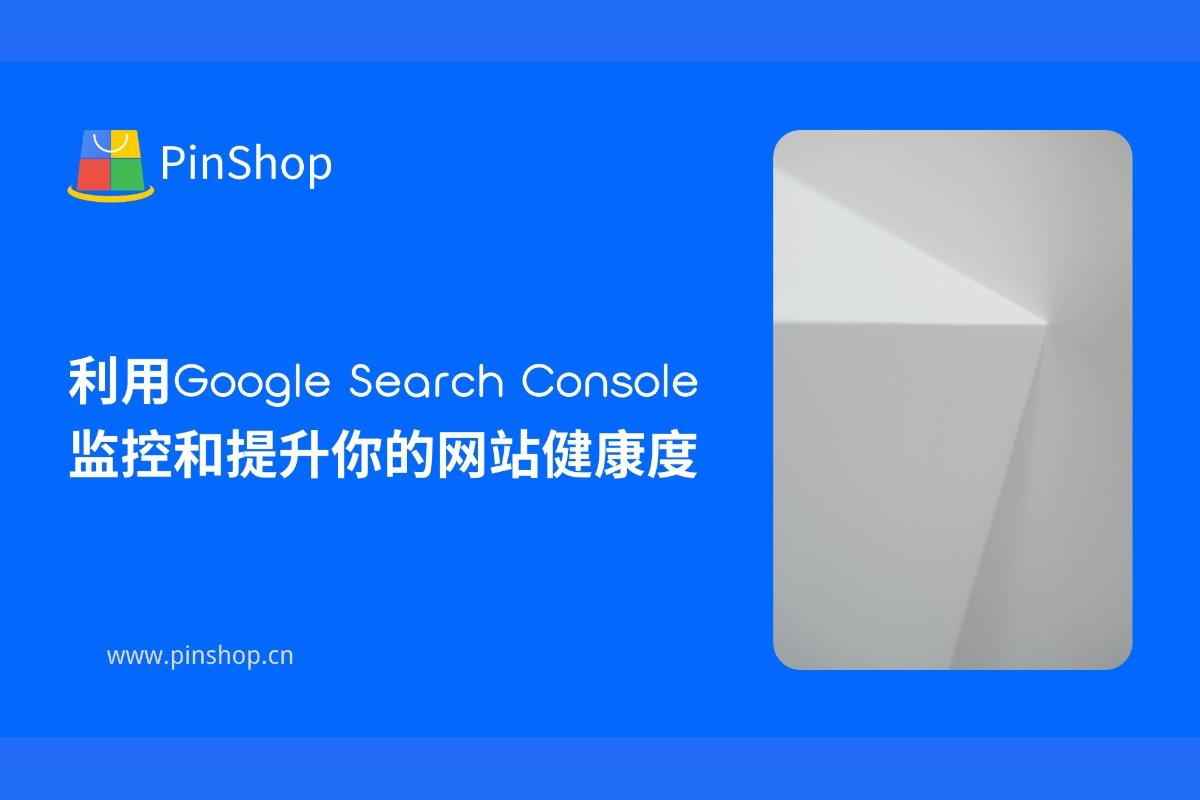In the international trade industry, how can you stand out in a fiercely competitive market and attract more potential customers? The answer may lie in structured data . By effectively utilizing structured data (such as Schema markup) on your international trade website, you can significantly improve search engine understanding and ranking of your website, thereby attracting more traffic and inquiries. This article will delve into how to optimize international trade website SEO using structured data, boost rankings, and seize traffic dividends.
1. Structured Data: The Secret Weapon for SEO
Structured data is a markup method that helps search engines understand web content. It uses specific formats (such as Schema.org) to provide search engines with clearer information about a page. For example, company information, product descriptions, prices, and customer reviews can all be marked up using structured data, helping search engines better understand and display this information.
In the construction of foreign trade websites, structured data not only improves search engine crawling capabilities, but also increases the visibility of the website in search results. For example, in Google search results, structured data can enable product pages to display information such as price and inventory status, increasing click-through rates and attracting more potential customers.
According to data from Google Search Central , websites that use structured data generally get better display in search engines and can significantly improve their search rankings.
2. How to achieve structured data optimization in foreign trade websites?
Choose appropriate Schema markup
Schema markup covers multiple categories, such as products, services, organizations, reviews, etc. For foreign trade websites, it is very important to choose the right Schema markup. Common markup types include:Product Schema : Used to mark product information such as name, price, inventory status, etc., to help Google display rich product information.
Business Schema : Used to mark company information, such as company name, address, contact information, etc., to help increase brand exposure.
Review Schema : Used to mark up customer reviews, helping to increase trust and display star ratings in search results.
According to research by the International Telecommunication Union (ITU) , the correct use of structured data can significantly improve the SEO performance of foreign trade websites and increase brand search visibility and click-through rates.
Marking up data using JSON-LD
Google recommends using the JSON-LD format to mark up structured data because it is more concise and easier for search engines to process. By embedding JSON-LD code in the head section or HTML of a web page, you can clearly mark up the key information of the website and improve search engine understanding.Verify and test structured data <br data-start="1263" data-end="1266">After embedding structured data in a web page, be sure to verify it using Google's structured data testing tool . This tool can check whether the data markup is correct and ensure that Google can recognize the data. Regularly checking and updating structured data is key to ensuring stable SEO performance of foreign trade websites.
3. How does structured data improve the SEO and conversion rate of foreign trade websites?
Improve search engine understanding <br data-start="1486" data-end="1489">Through structured data, foreign trade websites can present page content to search engines in a clearer format. Structured data helps search engines better identify key information such as product features, prices, and customer reviews, thereby displaying more information in search results and increasing click-through rates.
According to a report by the World Trade Organization (WTO) , foreign trade companies can attract more international customers and promote global development by optimizing their search engine visibility. Structured data is key to this process, enabling foreign trade websites to more accurately match user needs and improve search rankings.
Increase click-through rate and customer interaction <br data-start="1722" data-end="1725">Structured data not only improves SEO rankings but also attracts users to click by displaying more detailed information (such as price, ratings, etc.) in search results. For example, when users search for a specific product, the "price" and "availability status" in Google search results can be directly displayed, which is more attractive than traditional search results and thus increases click-through rate.
Enhance user trust and conversion rates <br data-start="1865" data-end="1868">Structured data can increase the credibility of foreign trade websites by displaying product reviews and company information (such as contact information). When customers see authentic reviews and ratings from other consumers, they are more likely to trust and make purchasing decisions.
4. Case analysis: How to apply structured data in foreign trade website construction?
For example, let's take a foreign trade e-commerce website that sells household goods. After adding structured data markup to the product pages, users will see the following information in search engines:
Product name, price, image
Current inventory status (e.g., "In stock")
Customer reviews and ratings
Relevant characteristics of the product (such as size, color, etc.)
These data not only improve the search engine's crawling capabilities, but also allow users to see more information in the search results, directly affecting customers' click decisions.
Recommended related articles: Foreign trade customer acquisition software intelligent SEO function: the secret of increasing independent station traffic by 200,000 per month
V. Summary and Call to Action
Structured data is a crucial tool for SEO optimization of foreign trade websites. Through appropriate Schema markup, foreign trade companies can not only improve their website's search engine rankings but also increase customer trust and conversion rates. Regularly reviewing and updating structured data and maintaining its accuracy are crucial to the long-term success of a foreign trade website.
👉 If you're looking to boost your ecommerce website's search rankings and attract more customers, Pinshop offers professional ecommerce website building and SEO optimization solutions. Let us help you boost website traffic and achieve higher conversion rates through structured data!











